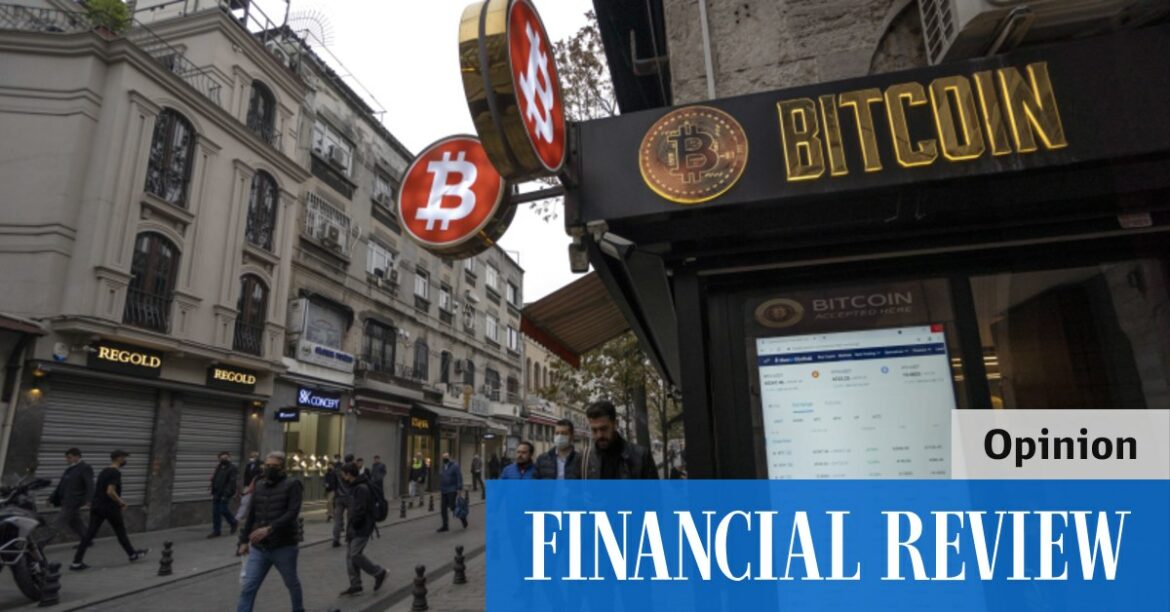In a few weeks or months, the Australian Securities Exchange will add another powerful endorsement when it allows its own crypto ETFs to list.
Of course, just because you can now invest in crypto ETFs doesn’t mean you should. The argument put forward by the issuers of these products – ETF Securities and Cosmos Asset Management in the first instance, and a bunch of fast followers to come including VanEck and BetaShares – is that these funds provide a regulated exposure to a wildly unregulated market, and that this should give investors some comfort.
Professional fund managers have legal responsibilities to act in the best interests of unitholders, and stringent custody and investment management insurance arrangements in place. It is not unreasonable that investors should prefer this kind of environment to one that is entirely decentralised and outside the bounds of sovereign nations.
But, to be clear, that does not mean their performance will be less volatile.
The two bitcoin ETFs and one ethereum ETF listed in Australia this week provide passive exposures to the underlying asset, meaning they should perform in line with the market, not outperform it.
Market meltdown
Unlike cryptocurrencies, and most of the platforms where you can buy them, these products are regulated by the Australian government and corporations law. But that should not be misconstrued as safe.
The chances of crypto ETF investors being bailed out by the taxpayer should the value of the underlying assets go to zero are also virtually zero – and rightly so.
Moreover, events of the past week in cryptocurrency markets have made many observers question the future of this much-hyped ecosystem.
The crypto market’s already inflation-inspired downturn was accelerated by a faulty algorithmic stablecoin called terraUSD, which was backed by bitcoin and supposed to be pegged to the US dollar, but crashed after a series of sudden and large withdrawals.
Prospective crypto ETF investors need to ask themselves whether this is a market they understand and want to expose their portfolios to – especially at the prices they are asking.
The first batch of crypto ETFs comes with alarmingly high management fees of 1.25 per cent a year. That makes them the priciest products on the market in their category of non-leveraged, index-tracking funds. Effectively, it is an active fund price for a passive exposure.
The claim of issuers that there are many specific costs involved in the storage and security of crypto assets is probably fair. Well-placed sources reckon as much as 100 basis points go to the running of the fund, with just 25 basis points going to the manager (and split with foreign partners, Switzerland-based 21Shares in the case of the ETF Securities funds and Toronto-based Purpose Investments in the case of Cosmos). It is understood issuers have paid more than $2 million in legal fees alone.
But the irony of paying top-dollar to access a market that prides itself on making financial transactions cheaper by removing layers of ticket-clippers is certainly not lost on crypto evangelists.
Opaque process
Similarly, while ETFs are arguably more transparent than their unlisted peers because they disclose their holdings more clearly and regularly, their listing process has been opaque – certainly compared to the blockchain, on which all transactions are public, traceable and permanently stored.
Over a five-year period, the would-be issuers of these ETFs made back-room representations to federal politicians to get them over the line, with NSW Senator Andrew Bragg having intervened on their behalf on numerous occasions.
The regulator’s position has also been unclear at times. It warned in July last year that crypto ETFs could create “real risk of harm” to end investors. But then three months later, it gave these products its blessing without much explanation for the change in tune.
These ETFs were due to begin trading on Cboe on April 27 but were delayed by a mysterious two-week delay as powerful “prime brokers” took more time to get comfortable with the asset class and terms of trade, allowing so-called market makers to set bid and offer prices once they list.
All the players involved in the listing process – the exchange, issuing firms, rivals – refused to name these service providers so that simple questions could be directed to them to help prospective investors understand these potentially important concerns.
Crypto ETFs have shoehorned a technology noted for its speed and decentralisation into an archaic centuries-old process controlled by shadowy players.
Neither the market makers nor prime brokers involved are revealed to investors in product disclosure documents – even though their support was evidently crucial to the healthy functioning of this new market.
And Cboe’s claim that it was simply completing some “standard checks” was so ludicrous, given the panicked negotiations behind the scenes, that it almost holds the market in contempt. The exchange declined so many requests to comment, this column cannot count them all.
Crypto ETFs have shoehorned a technology noted for its speed and decentralisation into an archaic centuries-old process controlled by shadowy players not accustomed to public scrutiny. That helps explain why their birth has come with so much trauma and expense.
But some investors will no doubt prefer all that baggage to the unfettered wilds of direct crypto markets.

